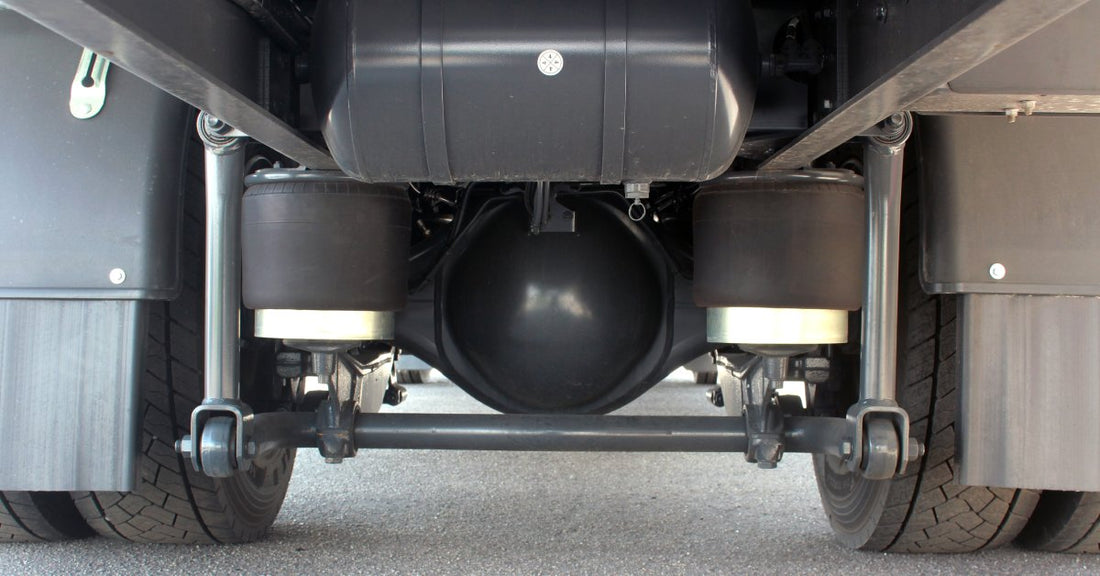
Safety Maintenance: When To Replace Semi Truck Airbags
When you think of airbags, you most likely picture the safety device that inflates after a collision. However, there’s another airbag that’s designed for the suspension system in semi-trucks.
Ensuring your semi-truck’s suspension system is in top shape is necessary for safety, performance, and cost-efficiency. Airbags provide a smooth ride, protect cargo, and support the vehicle’s longevity.
Whether you’re a driver, fleet manager, or an operator, understanding proper care practices for airbags is vital. Read on and discover when to replace your semi-truck airbags and related maintenance essentials.
The Importance of Regular Airbag Maintenance
Airbags play a key role in a semi-truck’s stability and ride quality. They absorb road shocks, ensuring a more comfortable ride for drivers while protecting sensitive cargo from damage caused by excessive vibrations. Not to mention, they can improve handling, making the truck safer to operate, especially under heavy loads or rough road conditions.
Regular maintenance is necessary to prevent unexpected failures that could lead to costly breakdowns or accidents. Beyond safety, consistent upkeep extends the lifespan of the suspension system, reduces wear on other components, and delivers considerable long-term savings. By prioritizing regular inspections and timely replacements, fleet managers and drivers can safeguard their trucks, operations, and reputation.
Recommended Replacement Timetables
Semi-truck airbags have a lifespan of around five to seven years. However, this range is not set in stone; wear and tear can vary depending on the truck’s purpose.
Airbags endure substantial stress over time because they support heavy loads, absorb road shocks, and stabilize the vehicle. Trucks operating under consistently heavy loads or in demanding conditions will likely require airbag replacements sooner than other semi-trucks. By staying alert to the pressure and strain placed on these components, fleet managers and drivers can better estimate when their suspension system may need attention to avoid unexpected failures.
Several factors influence the timing of airbag replacements, making it challenging to rely solely on a general lifespan guideline. Trucks covering high mileage across uneven or poorly maintained highways will experience faster airbag degradation than those traveling on smooth routes. Similarly, driving in extreme climates—whether it’s the harsh cold of winter or the intense heat of summer—can accelerate wear, causing materials like rubber to crack or weaken.
Load weight also plays a role; consistently hauling at maximum capacity puts added strain on the suspension system. Factoring in these variables will help drivers and fleet managers assess the risks for each truck and provide proactive replacements.

Select the Right Airbags for Your Semi-Truck
It’s crucial to select airbags that complement the truck’s specifications, including load capacity and suspension type. Airbags designed for heavy loads can manage the stress and pressure associated with carrying more weight, while those for lighter applications prioritize comfort and efficiency.
Additionally, it’s important to check that the selected models are compatible with your truck’s make and model. Improperly matched airbags can lead to reduced performance, uneven weight distribution, and increased wear on suspension components.
When evaluating the options, look for high-quality materials that are durable under demanding conditions. Airbags made from resistant materials like reinforced rubber or synthetic composites tend to last longer and perform better across varying terrains and climates than other materials.
Researching manufacturer reputations and considering warranties can also guide you toward reliable products. Investing in airbags with strong customer reviews and comprehensive warranty coverage provides confidence in the product’s performance, giving your fleet the support it needs for the long haul.
Tips for Airbag Maintenance
Conduct Routine Inspections
Fleet management best practices focus on aligning airbag checks with regular maintenance schedules to ensure timely replacements. Routine inspections during tire rotations, oil changes, or brake checks are an excellent time to examine them for cracks, leaks, bulges, or visible signs of damage.
Many fleet operators integrate diagnostic tools or tracking software to log airbag age, mileage, and condition, helping prevent missed replacements. Investing in periodic, thorough maintenance—rather than waiting for issues to escalate—ultimately reduces the risk of breakdowns, costly delays, and safety concerns.
Check Airbag Inflation Levels
Ensuring proper inflation levels is also critical, as underinflated or overinflated airbags can compromise the suspension system’s efficiency and safety. During these checks, it’s a good idea to inspect the air lines and fittings for any signs of corrosion or damage. A simple inspection at every stop or during service intervals can go a long way in catching issues early.
Clean the Airbags
Keeping the airbags clean and protected from environmental damage is another key aspect of maintenance. Dirt, debris, and road salt can accumulate over time and degrade the materials, especially around the folds and crevices. Regularly cleaning the airbags using a soft brush or cloth with approved cleaners can remove harmful elements without causing damage.
Additionally, protect them from prolonged exposure to harsh weather conditions—such as extreme heat or freezing temperatures—to maintain their structural integrity. Using weather-resistant coatings or covers is an effective way to keep them shielded from the elements.
Scheduling Professional Maintenance
Relying on professional maintenance services offers another layer of protection. Trained technicians can conduct in-depth inspections and use diagnostic tools to detect issues that might not be visible during a routine check. These professionals can test compatibility and alignment between the airbags and surrounding suspension components, ensuring everything functions correctly.
Regular visits to a qualified service center can help identify and address problems early, prevent breakdowns, and maintain the truck’s suspension system. Partnering with trusted mechanics for periodic maintenance is an investment in your fleet’s safety, reliability, and long-term cost savings.

Find Quality Suspension Parts at Van Horn!
Understanding the best safety maintenance tips and when to replace semi-truck airbags is an investment in the longevity and efficiency of your fleet. Regular inspections, timely replacements, and airbags tailored to the truck’s specifications will keep your operations running smoothly. By prioritizing airbag maintenance, you enhance the reliability and reputation of your fleet.
Looking for top-quality semi-truck front suspension parts? At Van Horn Truck Parts, we offer a wide range of reliable airbags. Our products will provide maximum performance under the toughest conditions. Whether you’re repairing or upgrading your suspension system, you’ll find the perfect parts at Van Horn Truck Parts.

